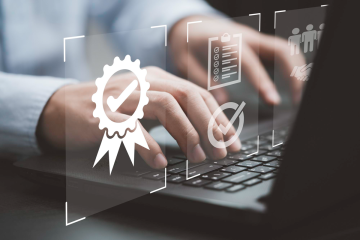Introduction:
The landscape of work has undergone a seismic shift in recent years, with remote work becoming increasingly prevalent. While this offers numerous benefits in terms of flexibility and productivity, it also presents significant challenges, particularly in the realm of cybersecurity. As organizations adapt to this new way of working, they must navigate the complexities of securing sensitive data and ensuring compliance in remote environments. In this comprehensive guide, we will explore the key challenges of remote work security and provide actionable strategies and tools to mitigate these risks effectively.
Challenges of Remote Work Security:
One of the primary challenges of remote work security stems from the decentralized nature of remote work environments. Unlike traditional office settings, where security measures can be centrally managed and enforced, remote work introduces a multitude of endpoints and potential vulnerabilities. Employees accessing company resources from personal devices and unsecured networks increase the risk of data breaches and cyberattacks. Additionally, the lack of physical oversight makes it difficult for organizations to monitor and enforce security protocols effectively.
Another significant challenge is the heightened risk of insider threats in remote work settings. Employees may inadvertently compromise sensitive data through negligent actions, such as sharing credentials or falling victim to phishing scams. Moreover, disgruntled employees may intentionally leak confidential information or sabotage systems, posing a significant threat to organizational security.
Furthermore, remote work raises concerns regarding regulatory compliance, particularly in industries subject to stringent data protection laws. Ensuring compliance with regulations such as GDPR and HIPAA becomes more complex when employees are dispersed across different locations and jurisdictions. Failure to comply with these regulations can result in severe financial penalties and reputational damage for organizations.
Strategies for Remote Work Security:
Despite these challenges, there are several strategies and tools that organizations can leverage to enhance remote work security effectively. Firstly, implementing robust authentication mechanisms, such as multi-factor authentication (MFA), can significantly reduce the risk of unauthorized access to company systems and data. By requiring multiple forms of verification, MFA adds an additional layer of security, making it more difficult for cybercriminals to compromise accounts.
Secondly, organizations should invest in secure remote access solutions that encrypt data transmission between employees’ devices and company servers. Virtual private networks (VPNs) and secure sockets layer (SSL) protocols encrypt network traffic, protecting sensitive information from interception by malicious actors. Additionally, remote desktop solutions enable employees to access company resources securely without exposing them to external threats.
Furthermore, conducting regular security awareness training for employees is crucial in fostering a culture of security consciousness. Educating employees about common cyber threats, such as phishing and malware, empowers them to recognize and report suspicious activities effectively. Additionally, emphasizing the importance of maintaining strong passwords and adhering to security policies can help mitigate the risk of insider threats.
Moreover, organizations should implement robust endpoint security measures to protect devices used for remote work. Deploying antivirus software, firewalls, and intrusion detection systems can help detect and prevent malware infections and unauthorized access attempts. Furthermore, implementing remote device management solutions enables organizations to enforce security policies and perform regular vulnerability assessments to identify and address potential security weaknesses.
Compliance Considerations:
In addition to implementing technical safeguards, organizations must also ensure compliance with relevant regulatory requirements when operating in remote work environments. This includes implementing measures to protect the privacy and security of sensitive data, such as encryption and access controls. Organizations subject to GDPR must obtain explicit consent from employees before processing their personal data and ensure that data transfers outside the EU adhere to the principles of adequacy and necessity.
Similarly, organizations in regulated industries, such as healthcare and finance, must comply with industry-specific regulations governing the protection of sensitive information. This may involve implementing additional security measures, such as data encryption and audit trails, to ensure the confidentiality, integrity, and availability of patient and financial data.
Conclusion:
In conclusion, navigating the challenges of remote work security requires a multi-faceted approach that encompasses technical, organizational, and regulatory considerations. By implementing robust authentication mechanisms, secure remote access solutions, and comprehensive security awareness training, organizations can mitigate the risks associated with remote work effectively. Furthermore, ensuring compliance with regulatory requirements is essential for protecting sensitive data and maintaining the trust of customers and stakeholders. As remote work continues to evolve, organizations must remain vigilant and proactive in adapting their security strategies to address emerging threats effectively.


